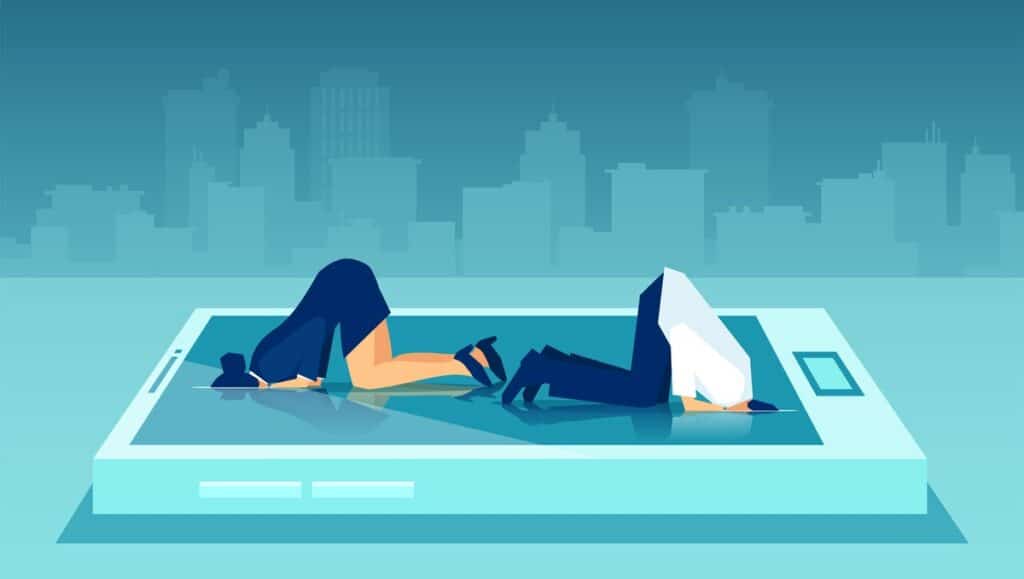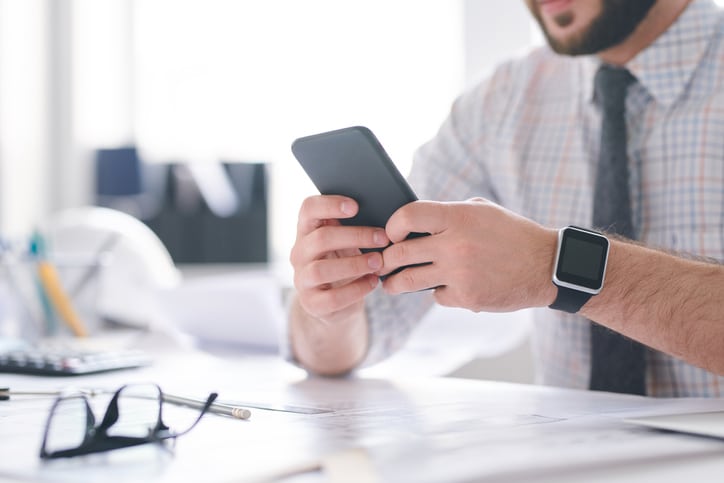
It’s time to put down your smartphone and pick up your life.
Did you know the average American typically spends 5.4 hours per day on their smartphone?
It’s not just young people, either. Americans of all ages spend several hours staring at screens, from computers to televisions to smartphones.
If this applies to you, imagine what your life would look like if you freed up some of that time for meaningful things.
What do you wish you could do every day but never seem to find the time for?
You may agree that it’s time to put down the smartphone and do more of what matters to you, but it’s not always easy to change your habits. Here are a few tips to help you take charge of your screen time.
Set an Attainable Goal
If you currently spend several hours a day on social media, it’s unrealistic to try to quit all at once. Instead, look at your phone’s digital wellness settings to see how much time you spend on social media, email and games.
- Set a goal to reduce time spent on your phone by a manageable amount, maybe 25%.
- Use your smartphone’s app limit settings to cut those apps off after 75% of your current usage.
- Once that time limit seems normal to you, cut back by another 25%.
Kick Your Phone Out of Bed
As difficult as it may be to resist time-wasters like social media during the day, it’s even more challenging at night. I mean, who isn’t guilty of scrolling way past their bedtime?
To avoid mindlessly scrolling when you should be getting much-needed sleep, commit to placing your phone on the charger before you slide into bed. But here’s the kicker – don’t charge your smartphone within arm’s reach of your bed.
This approach has two benefits; it puts a barrier between you and your phone, and it forces you to get out of bed in the morning to turn your alarm off.
Communicate With Friends, Family and Coworkers
Everyone has a touch of nomophobia, the fear and anxiety of being without your smartphone.
For some this feeling primarily stems from a fear of missing something important, like a genuine emergency. For others, it’s the fear of missing out (FOMO).
In either case, we all feel compelled to check our phones dozens of times a day for the latest email, Snapchat or text.
However, setting up an auto-reply can help put your mind at ease. You can schedule an out-of-office notification in your email app or set up automatic text replies letting people know that you will eventually reply.
If you feel like you’re losing touch with friends and family, especially by weaning yourself off social media, set aside time each week to meet up in real-time, whether it’s in person, on the phone, or over Zoom.
Set an Intention for Each Pickup
Being bored is not the best reason to reach for your smartphone. So before unlocking your phone, ask yourself why you’re doing it and why now.
If you’re picking it up to do research, pay a bill, check your email, look up a recipe, or do something else intentional, stick to that one thing and then put the phone away again.
But if you’re like most people, you have picked up your phone to look something up or send someone a message and then gotten distracted by notifications or social media.
If you often have trouble with this, try writing down what tasks you intend to accomplish and then checking them off as you go. Then, if you get distracted, you can look at your list.
If you haven’t written anything down and can’t remember your intention, put the smartphone away until you remember – instead of mindlessly scrolling.
Another great way to save time is with BEST’s Employee Concierge and Errand Running Services. On average each service saves 1.2 hours!


